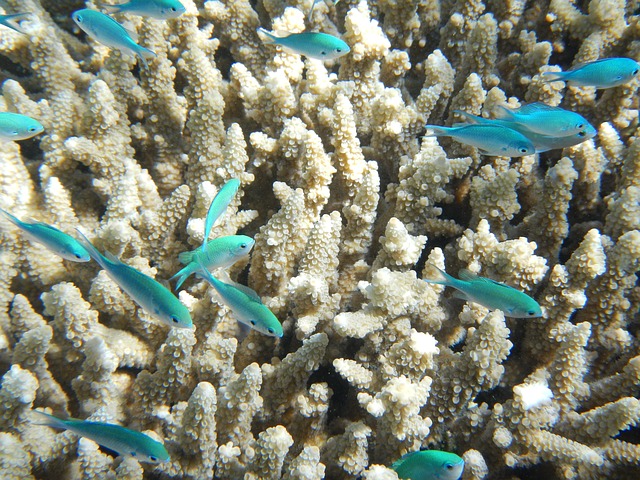The National Oceanic and Atmospheric Administration announced that the longest coral bleaching event ever recorded has ended, but Guam’s reefs are still highly vulnerable.
NOAA stated that as of June 19, global coral bleaching, which began in 2015 and happened in the Atlantic, Pacific and Indian Oceans, was at an end. It was only the third such event documented in world history, with over 70% of tropical coral reefs experiencing very high temperatures that caused bleaching, USA Today reports.
Coral reefs in the US “were hit hardest, with two years of severe bleaching in Florida and Hawaii, three in the Commonwealth of the Mariana Islands, and four in Guam,” NOAA said. Bleaching is coming to a halt in the Indian Ocean, but the NOAA Coral Reef Watch forecasts that Guam’s reefs will reach Alert Level One in five to eight weeks. Alert Level One means the probability of coral bleaching is high, while Alert Level Two means that coral death is very likely.
Guam experienced coral bleaching in 2013, 2014 and 2016. In 2015, its reefs were damaged by tremendously low tides. During the 2013 event, 85% of Guam’s coral types were affected, while in 2014, half of branching staghorn coral died by bleaching.
Extremely warm water, low tides and hot weather causes coral polyps to eject algae. The algae provide energy needed for the corals to grow and reproduce. When temperature and light both increase, the algae become toxic for. Once corals lose their algae, they begin to look bleached, NOAA reports.
Bleached coral can survive and revive under certain conditions, but remain highly vulnerable and can die faster than coral polyps can grow.
Guam’s Coral Reef Response Team has found “a little bit of paling on the reef, but we don’t know how intense our response needs to be just yet,” according to National Coral Reef Management Fellow Whitney Hoot.
A coral nursery at the University of Guam is growing corals for transportation, Hoot said. Shade cloths were placed over the nursery when the alert was issued, to keep the corals safe. However, shade cloths can only be used for a minimal area.
The response team says it will continue monitoring the reefs to find which areas are the most susceptible to bleaching. The team can also take steps to protect Guam’s reefs from experiencing stress caused by other factors.
“If you’re in a marine preserve, be familiar with the regulations so if you see someone violating them, you can call conservation officers, because having healthy fish populations is really important to keeping reefs healthy,” Hoot explained. “If you see a big gill net on the reef, report it so we can go and take it off. The healthier our reefs are, the less likely they are to die from coral bleaching.”
























